
Giovan Battista Boccabadati (February 1635 - October 17 1696) was a practising and teaching lawyer, mathematician, engineer and writer, especially of plays.

Giovan Battista Boccabadati (February 1635 - October 17 1696) was a practising and teaching lawyer, mathematician, engineer and writer, especially of plays.
Giovan Battista was born in Modena to Adonio Boccabadati and Laura Gadaldini but was left an orphan as a young man. Later he lived for a short time in Carpi with his relative, Canon Raineri Boccabadati, returning on his death in 1649 to Modena. We know nothing of the studies that were to give him a wide literary, legal and scientific knowledge, nor where he gained his degree in civil and canon law. He was also to gain a reputation as a writer, beginning with poetry on political subjects in the 1650s and then from 1664 turning to drama. He died in Modena.
As well as practising law, Boccabadati was also involved in mathematical and scientific studies. It was this versatility that led the Duke of Modena to make him his librarian in 1671 and promote him to a readership in law at the new university college in 1678. In 1681 the Duke appointed him general engineer with a special allowance for the trips that he had to make to Brescello, which suggests that he was engaged in the work of widening and strengthening the fortress there so that it became the best equipped and strongest in the Duchy. Afterwards, he succeeded to new university positions teaching mathematics and physics. During this time too, Boccabadati was commissioned to make the first complete topographical map of Modena, a work in which he was employed for about six months; others by him are also known.
His writing for the theatre also continued and in 1693 he wrote his prose drama Scipione for the celebration of the marriage between Francesco d'Este and Margherita Farnese. This later formed the basis for Apostolo Zeno's libretto, Scipione nelle Spagne (1710), an opera set by various composers inside and outside Italy throughout the 18th century. Among other literary works by Boccabadati, there was a verse epithalamium for the wedding of the Marchese Filippo Rangoni (1760), later a great patron of opera, and two sonnets contributed to a publication celebrating the liberation of Vienna from Turkish attack in 1683.

Gerolamo Cardano was an Italian polymath whose interests and proficiencies ranged through those of mathematician, physician, biologist, physicist, chemist, astrologer, astronomer, philosopher, writer, and gambler. He became one of the most influential mathematicians of the Renaissance and one of the key figures in the foundation of probability; he introduced the binomial coefficients and the binomial theorem in the Western world. He wrote more than 200 works on science.
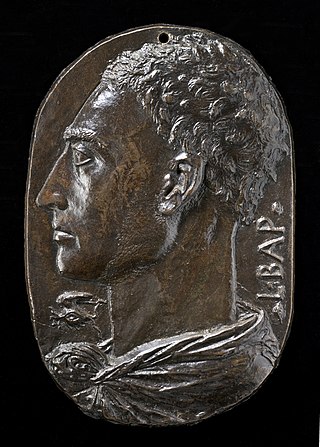
Leon Battista Alberti was an Italian Renaissance humanist author, artist, architect, poet, priest, linguist, philosopher, and cryptographer; he epitomised the nature of those identified now as polymaths. He is considered the founder of Western cryptography, a claim he shares with Johannes Trithemius.

Pietro Antonio Domenico Trapassi, better known by his pseudonym of Pietro Metastasio, was an Italian poet and librettist, considered the most important writer of opera seria libretti.
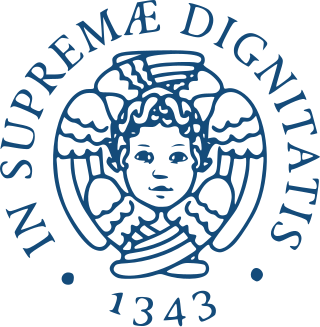
The University of Pisa is a public research university in Pisa, Italy. Founded in 1343, it is one of the oldest universities in Europe. Together with Scuola Normale Superiore di Pisa and Sant'Anna School of Advanced Studies, it is part of the Pisa University System.

The University of Turin is a public research university in the city of Turin, in the Piedmont region of Italy. It is one of the oldest universities in Europe and continues to play an important role in research and training.
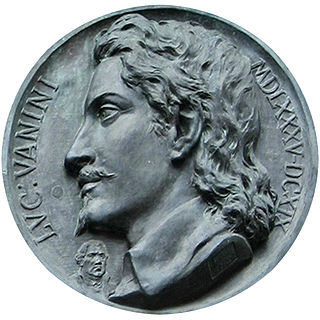
Lucilio Vanini, who, in his works, styled himself Giulio Cesare Vanini, was an Italian philosopher, physician and free-thinker, who was one of the first significant representatives of intellectual libertinism. He was among the first modern thinkers who viewed the universe as an entity governed by natural laws. He was also an early literate proponent of biological evolution, maintaining that humans and other apes have common ancestors. He was executed in Toulouse.

Giovanni Bononcini was an Italian Baroque composer, cellist, singer and teacher, one of a family of string players and composers. He was a rival to George Frederic Handel.

Giovanni Battista Venturi was an Italian physicist, savant, man of letters, diplomat and historian of science. He was the discoverer of the Venturi effect, which was described in 1797 in his Recherches Experimentales sur le Principe de la Communication Laterale du Mouvement dans les Fluides appliqué a l'Explication de Differens Phenomènes Hydrauliques, translated into English by William Nicholson as "Experimental Inquiries Concerning the Principle of the Lateral Communication of a Motion in Fluids," and published in 1836 in Thomas Tredgold's Tracts on Hydraulics. Because of this discovery, he is the eponym for the Venturi tube, the Venturi flow meter and the Venturi pump.

Alessandro Tassoni was an Italian poet and writer, from Modena, best known as the author of the mock-heroic poem La secchia rapita.
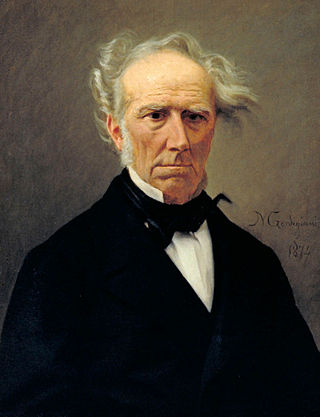
Giovanni Battista Amici was an Italian astronomer, microscopist, and botanist.
The University of Modena and Reggio Emilia, located in Modena and Reggio Emilia, Emilia-Romagna, Italy, is one of the oldest universities in Italy, founded in 1175, with a population of 20,000 students.

Giovanni Battista Doni was an Italian musicologist and humanist who made an extensive study of ancient music. He is known, among other works, for having renamed the note "Ut" to "Do" in solfège.
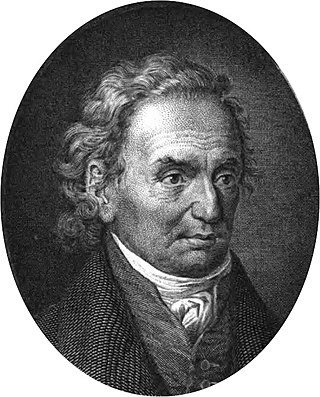
Pietro Giordani was an Italian writer, classical literary scholar, and a close friend of, and influence on, Giacomo Leopardi.
Pietro Abbati Marescotti was an Italian mathematician who taught in Modena.

The Continence of Scipio, or The Clemency of Scipio, is an episode in the life of the Roman general Scipio Africanus, recounted by the historian Livy. During Scipio's campaign in Spain during the Second Punic War, he refused to accept a ransom for a young female prisoner, returning her to her fiancé Allucius, who in return became a supporter of Rome. Scipio's magnanimous treatment of a prisoner was regarded as an exemplar of mercy during warfare in classical times. Interest in the story revived in the Renaissance and the episode became a popular topic for literary works, visual arts, and operas.
Alessandro Melani was an Italian composer and the brother of composer Jacopo Melani, and castrato singer Atto Melani. Along with Bernardo Pasquini and Alessandro Scarlatti, he was one of the leading composers active in Rome during the 17th century. He is also ranked among the second school of Roman opera composers which began with his brother's 1668 opera Il Girello. He is chiefly remembered today for his large output of liturgical music that he wrote while serving in various musical posts in Rome. Of particular interest is the large number of polychoral motets that he produced and his eight ascribed oratorios. Three published collections of his liturgical music survive today along with numerous solitary motets from other published volumes. A number of original manuscripts also survive.
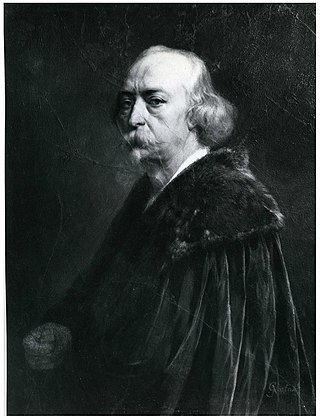
Andrea Gastaldi was an Italian painter, primarily of historical canvases and portraits.

Giovanni Battista Niccolini was an Italian poet and playwright of the Italian unification movement or Risorgimento.
Antonio Gianettini was an Italian organist, concertmaster and composer.
Giovan Battista Nicolosi, D.D., was a Sicilian priest and geographer. Nicolosi proposed a new projection for the construction of the world map in two hemispheres, known today as the Nicolosi globular projection, in which the parallels and meridians are arcs of the circle and equidistant along the equator and central meridian.
The information here is adapted from the biographical article by Tiziano Ascari in the Dizionario Biografico degli Italiani - Volume 10 (1968)